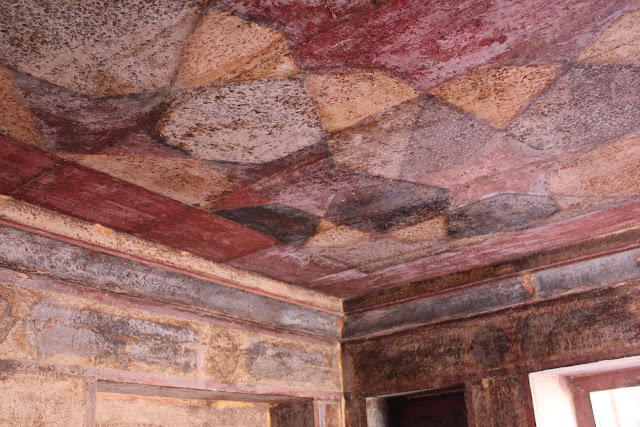Our encounters with and understanding of other cultures is of course colored by the fact that we come from the Northeastern United States. Having grown up in states that were part of the original 13 colonies and living near historical sites, we've been on field trips and family trips to some of the oldest places of interest when it comes to United States history. There were settlers and settlements before Europeans colonized the Americas, and there are many sites of interest in Central and South America from original peoples, but the United States itself isn't even 250 years old yet. In India, many of the places we visited were much, much older. In the US, the history that we learn and the science that we prize comes from Europe and then the United States. While we, too, created an independent country after years of British rule, I don't think I've ever heard any discussions or comparisons of India and the US in post-British years. We've heard of Gandhi, but don't really know that much about the Mughals or other notable Indians or eras in Indian history (beyond what one might learn in empire-building video games).

Seeing actual artifacts of resistance against the British...

and walking into the Imperial palace for a subcontinent...

...and find British barracks inside, the history gets a little more real.
India is old. Beyond that, many of the people we saw still survive in old ways. It is always strange to be visibly a minority when you come from a place where you are a member of the majority; you stand out, and as a tourist in a country like India, you carry a lot of privilege. Your money goes very far, so that you can afford what many consider luxuries even if you're a graduate student. If you're not staying strictly in luxury resorts, taking vans from one tourist attraction or designed-for-tourists restaurant to the next, you can see the kinds of poverty that are nearly unthinkable to a middle-class American. You become a target for beggars and shopkeepers trying to make as much money as they can off of you, while also knowing that even the steep tourist prices or some cash to a young mother or two in the street aren't really hurting your wallet.

They spent longer building this castle than the US has been in business. In fact, they spent long enough building it that it was more like the time between the Roanoke colony being founded and the current date than the length of time the US has been around.

We literally stayed in former palaces on multiple occasions on a grad student budget. This particular palace has a tent city in front of it. We felt shitty to be staying in a palace in front of a tent city.
The spice market part of the bike tour was interesting and lead to good views, but also felt like intruding into where these folks are actually living.

This entire delicious dinner for four was about $4, much, much less than US prices.
...But this small plate of fries was about $2 (they were pretty good though).
The sights were amazing. The manpower that went into creating buildings like the forts and the famous Taj Mahal is unthinkable, and yet craftspeople today are still spending hours using the same techniques to carefully craft stone inlays like they did at the Taj Mahal or paint in miniature as seen on multiple structures. We did not spend enough time there to really meet the people and understand the culture, but we were able to get a taste of it, and we're glad we did. India is a beautiful place, and our friend/guide did an excellent job planning our travels. We were able to take home some beautiful souvenirs that will remind us of our trip. The world is a big place, and we may never get to India again, so we appreciate the opportunity we had to experience it. Any time you really see something different than you have before, your picture of the world expands.
















































